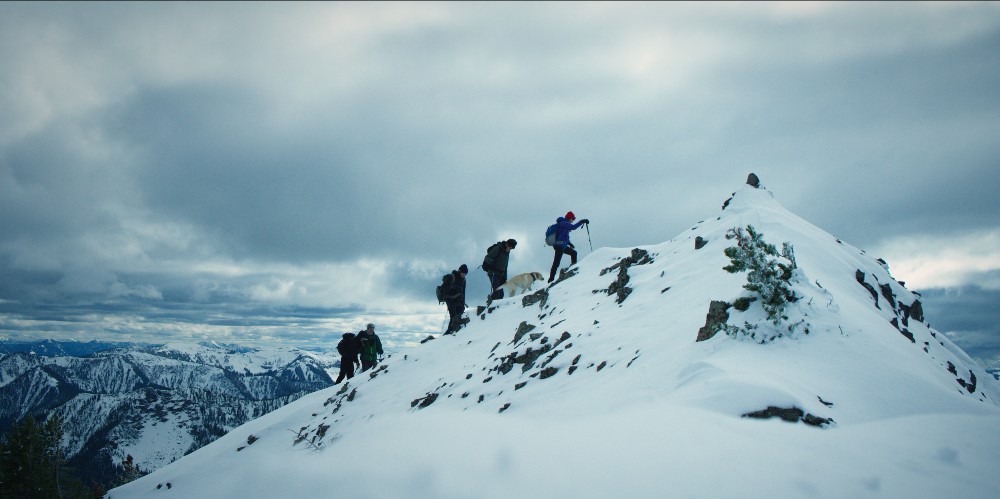
The death of a parent or other loved one can often throw an entire family into disarray. For filmmaker Max Lowe, the death of his father, renowned mountain climber Alex Lowe, in a 1999 avalanche at Tibet’s Mount Shishapangma, meant huge changes for his mother Jenny, as well as for him and his younger brothers, Sam and Isaac. Lowe was just 11 at the time of Alex’s death, while his brothers were 7 and 3, respectively.
Little did they know that their father’s long-time climbing partner, Conrad Anker, would take on the responsibility of looking after his friend’s family. Anker’s sense of duty and possible survivor’s guilt led to him and Max’s mother falling in love, getting married and Anker adopting her three boys. For 17 years, the bodies of Alex Lowe and cameraman David Bridges were thought to be lost, until 2016, two climbers found their remains. So began a journey for Max Lowe, not only to tell his father’s story and how difficult it was for him to balance his adventure-filled lifestyle with the responsibilities of having a family, but also to deal with his own difficulties adjusting to his new stepfather.
Below the Line got on Zoom with Max Lowe to talk about his compelling and extremely emotional film, which has been bringing audiences to tears since it debuted at the Telluride Film Festival in early September.
Below the Line: This must have been a tough film to make, revisiting all these memories. When did you start working on this? Was the first filming when your family went to recover your father’s body in 2016 or 17?
Max Lowe: That was the first shoot that we did, and really, we went and shot that not really knowing what it would become, at that point. Me and my younger brother shot that footage in Tibet together, and we recognized that if we were ever going to tell a story about Alex, that would have been part of his story. It wasn’t until later I think that it became clear that this film would be less about Alex and more about our family and his legacy that lies within our family story and the relationships that we still hold to him and how he’s impacted our relationships with one another.
BTL: Which younger brother shot it? I saw that your brother Isaac had a credit for graphics and animation as well.
Lowe: Sam, who’s my middle brother, who’s four years younger than me, shot with me in Tibet. He shot as second camera on a handful of other shoots in the production of the film, and then Isaac, who’s a graphic designer, did all the titles, so we got the whole family involved.
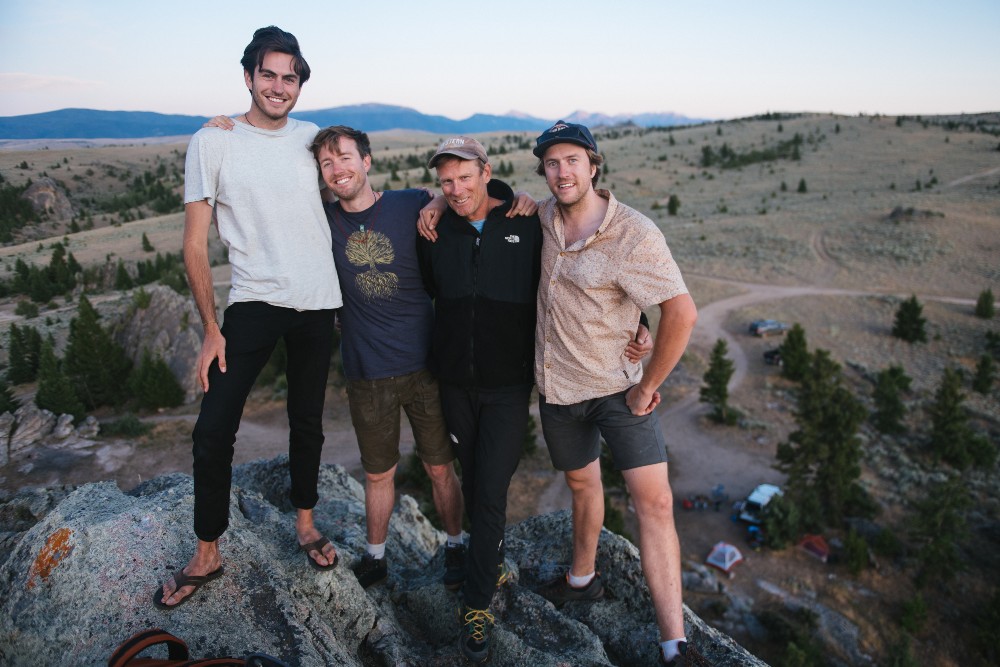
BTL: Were your mother and Conrad aware that it was going to become what it ended up becoming? Did you inform them that they would be talking about their relationship on camera, as well?
Lowe: I think coming out of that trip to Tibet, somewhere along our way back to the US, I remember having a conversation with my Mom being like, “This can be an amazingly powerful film.” We’ve seen our story used in small pieces for other films, for other stories that have been told over the years. I recognize the palpable emotional impact that it had had on audiences that I’ve been sitting as a part of. I don’t think they ever expected that it would become what it was, which is more of an exposé of each of our emotional landscapes and how they have been affected by Alex’s life and death. They definitely were pleased with me at moments in the making of the film. I think everyone has come around to seeing the value in it in one way, shape or form?
BTL: I had heard little bits and pieces of this when it was at Telluride, so I knew it was about your father and what happened to him, and since it was NatGeo, I just assumed it was another mountain climbing film, which it’s not really at all. Have there been other movies specifically about what happened to your father?
Lowe: I mean, there’s never been a feature that focused specifically on him. They were shooting a film in Tibet when he was killed. We have all of that archival from that trip, and you see Michael Brown, the filmmaker from that production, in the scene with me exploring some of the archive. They actually made like an hour-long TV special about the expedition, and that touched on Alex’s death. And then over the years, there have been several documentaries that touched on our story a bit including Jimmy [Chin] and Chai [Vasarhely’s] Meru. Conrad, my stepdad, is one of the central characters in that, I would say. There’s a brief 5 to 10-minute section where they talk about Alex’s death and how it impacted Conrad’s Life. It was watching Meru in the theater at Sundance, when it premiered, where I really had my eyes open to just how much power there was, in that. It was the moment in that film where everyone was crying in the audience, including myself. In that moment, I recognized the power that our story held in a way that people maybe hadn’t seen.
BTL: That premiere of Meru at Sundance has really inspired many other filmmakers. Obviously, Jimmy and Chai went on to make Free Solo, which won the Oscar, and I also spoke to the directors of The Alpinist, which connects to that movie. You had been shooting stuff with your brother. Was Michael Brown involved with this as well?
Lowe: No, not in any bigger sense, then he sat for an interview, and was a part of that scene where we were recovering archival footage of the Shishapangma expedition. But my producer, Chris Murphy from Bozeman [Montana], came on to help me very early on. I was shooting and starting to kind of think about what making a feature film out of this would look like. He had experience in the space, and he helped me put together a pitch deck, and we cut a sizzle together, and we really took it out in the world, and together kind of pitched it as what it has become. So he was a huge player in helping me shape Torn. He shot a lot of film in the scenes where we couldn’t have too many people. We brought DPs in for some of the interviews, but Chris was a huge, huge player, in helping me find the perspective that I needed to have to also step out of my own experience. I would say that my editor, Michael Harte — the editing on this project also was something that made it what it is. We just had so much footage to sift through, and we did a lot of that together, but his dedication and experience in telling a quiet and emotionally-fraught story like this in a way that an audience could appreciate, by their own experience was totally invaluable.
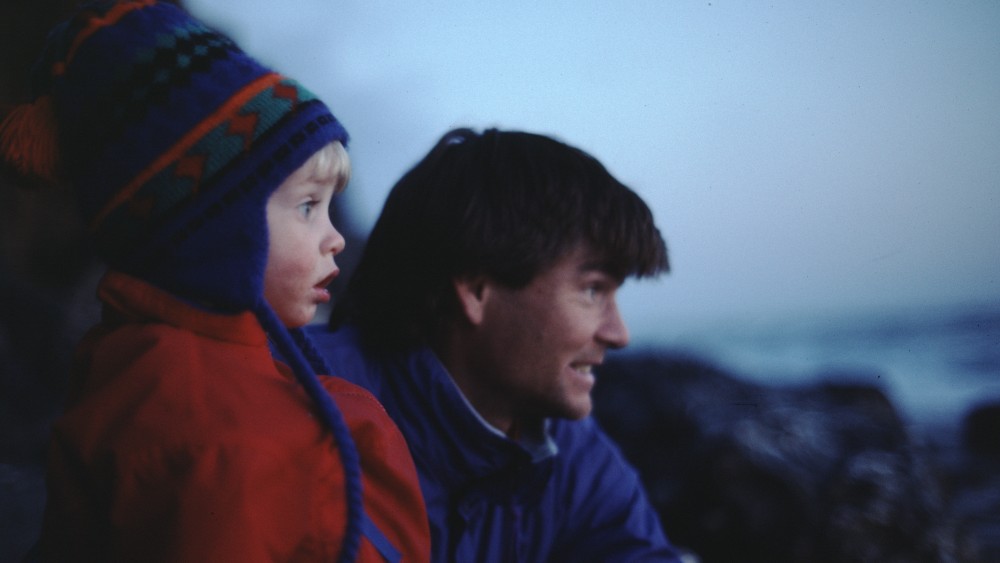
BTL: I noticed that Michael Harte is also credited as a writer. Such a large part of making a doc is written in the editing process, when you’re sitting there going through everything. Did you have him involved even before the sizzle reel, or was there no editing until you had backing and financing?
Lowe: We brought him on after the film had all been shot. He was coming out of another project. He’s a very sought-after editor and a friend had recommended him to me. He had just come out of Three Identical Strangers, which is a family drama. I told him about the film that I wanted to make and that we had shot. I wanted to make a climbing movie that wasn’t a climbing movie, and he liked the sound of that. He’s a very sensitive, talented person, and he really knows how to tell human stories in a remarkable way. So we brought him up to L.A. He is based in London, and he moved to the U.S. for the better part of a year when we worked together.
BTL: Was this all in 2020 or was it before the pandemic?
Lowe: That was in 2019, and we started editing in July of 2019. Michael actually arrived in L.A. on the Fourth of July, and there was an earthquake the day after he arrived.
BTL: The full American experience.
Lowe: [laughs] I love Michael. He became an amazingly close friend. We gave him that writing credit, because it was just me and him sitting in an edit bay together for so long. I had dreamt up what the story could be and shot it as I knew I wanted people to experience it, but there’s no way I could have done that without his perspective, because I was so close to the story. I needed someone like him to come and help me really shape it as a storytelling device.
BTL: Speaking of the footage you had and the other things you had like family pictures, and your father shot home movies, and I guess someone else was shooting when Conrad was around. There’s a lot of home video, so how did you get it all? Was it on people’s phones and stuff? How did it come together as far as finding everything?
Lowe: Most of the archives — I don’t think there’s any of it that was digital. It was all mini DV cam stuff, for the most part. A lot of the climbing archival was shot by professional film teams in the ’80s and ’90s, some of it on Super 16. Most of the stuff that you see that Alex shot of our family, and Conrad later shot, the stuff of my parents’ wedding, that’s all mini DV cam. This was pre-digital era or digital video cameras. It was cool to go back and actually digitize. I personally went and digitized most of all of that video stuff, and it was just like sitting there, and the computer records it as you watch it. So, I watched pretty much all of that archive, through and through, which was a palpable emotional experience in its own regard.
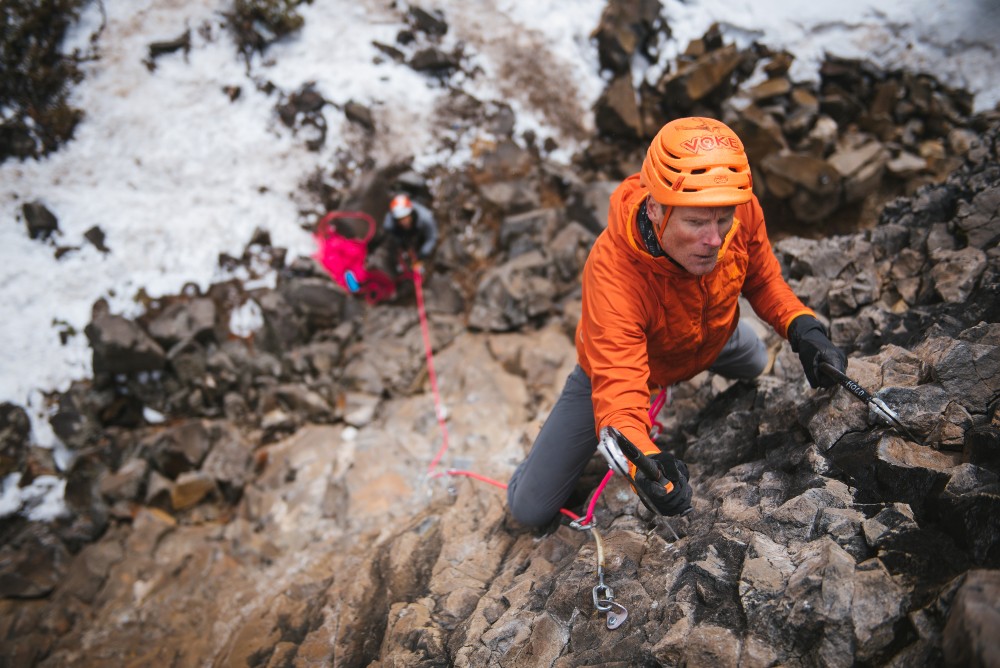
BTL: I don’t know if you have any kids or nephews or nieces, but this film would be a great way to get them caught up once they get older.
Lowe: I know. I’ve thought about that a lot. The film is gonna live beyond me. It’s this thing that’s out in the world, and it’s fun to imagine my grandkids, if I have them, watching this movie someday. It’s wild.
BTL: What about the 16mm footage? I expect Conrad must have had connections to the people filming their climbs, so did he put you in touch with the people?
Lowe: I mean, that scene where we go back to recover that footage of Shishapangma. That was why we went on that trip to Aspen. Michael Brown and his producing partner in that project, that was shot for NBC Sports in partnership with North Face back in the late 90s. There was a digital version of the final cut of the film with music inlaid and everything else from the ’90s, but I wanted to get those raw clips. I wanted to see everything that Michael had shot, see if there were moments in the last days and moments of Alex’s life that would give me some sort of deeper understanding of who he was, and what he was thinking about in the last moments of his life. Those were on Super 16 reels that we had digitized, as well as beta-cam transfers. It was wild to go back and explore this realm of filmmaking beyond my sphere of understanding and look at the technical aspects of how that was captured and recaptured.
BTL: There was a time where you couldn’t just plug a camera in with a USB cable.
Lowe: Oh, my God. So many huge machines and transferring and digitizing all that stuff. It was pretty remarkable the machines that we got to play with and the people who man and operate those machines. So many singularly unique cables, an immense amount of cables that became obsolete so quickly.
BTL: I want to ask about the music because the score was spectacular, so how did you decide who to use for the music and how to approach it?
Lowe: Danny Bensi and Saunder Jurriaans. We were looking at different options for composers. This is my first film that I’ve ever scored. I’ve had individual tracks that I licensed from artists in the past for short documentary films, but this being my first feature, I had never worked with composers before. It was super exciting to be able to explore all these different artists that we would work with to build the musical landscape piece, which obviously brings so much of the emotional impact of the film to bear. Working with Lightbox, we had access to some of the folks they had worked with in the past. Danny and Saunder had scored a film that I really, really liked called LA 92 that was just archive brought to life without any interviews or anything. They scored this amazing soundbed for the film that really gave it its emotional texture in a lot of ways. I wanted our film to feel big in these moments where you are in the mountains, but then also have this quiet intimacy of some of those more emotional and small spaces in scenes we have, in our interviews and some of the other moments. I thought that they could do that with their talent being able to tell a story by music. So yeah, it was a great partnership with them.
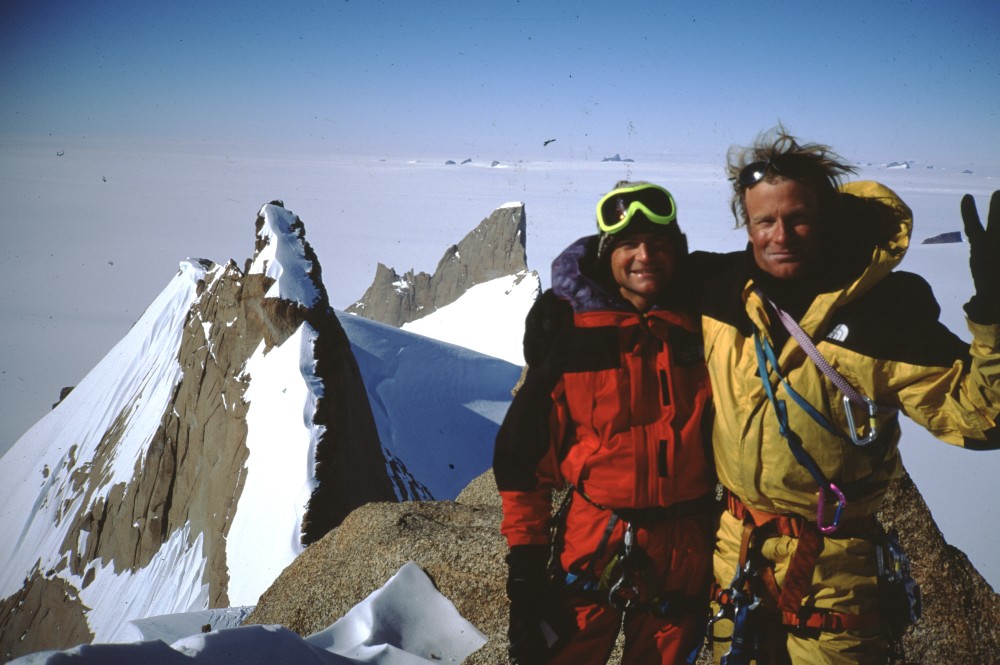
BTL: I also have to ask. “Sweet Emotion” by Aerosmith. How hard was it getting that song? Did you have to send the band your film to approve? As the song played, I just thought about the dollar signs that were rolling as it went along.
Lowe: My producer Chris knew Steven Tyler‘s manager, so we sent him a rough cut of the film, in hopes that he would let us license that song for less than $200,000, which is probably what it goes for in any other commercial endeavor. For whatever reason, he liked the story and ended up giving us a pretty sweet deal on licensing that song. I really wanted a song like that — that was kind of my first choice, but it would be a long shot to try and get it. Originally, when I was like, “Why don’t we get something like Aerosmith?” Michael kind of scoffed at me. He’s like, “No one will ever go for that.” I wanted to convey the fun and the high that Alex and Conrad must have felt in those early years when their career was first taking off. I think that scene fits that song perfectly in the sense that you get this elation that they must have felt, being handed this golden ticket to go on all the most wild adventures that they ever could have dreamed of.
BTL: It reminded me of some of Red Bull’s sports-adventure movies, and it’s the kind of song you’d expect them to pay the $200,000 to use. It was a nice moment and then where it led after that. Obviously, you were making this movie, and then COVID hit. I’m not sure where you were at when that happened, but obviously, you weren’t able to shot it for an audience until Telluride in September. Was that the first real audience?
Lowe: We were supposed to premiere at Telluride in the fall of 2020, which was cancelled a month out, and when they cancelled the festival, they offered us the opportunity to hold and premiere with them the following fall. We went back and forth a lot about it internally, but in the end, NatGeo kind of gave us the choice whether we wanted to roll the film out virtually and do no in-person screenings of the film… or wait. Even though the doc landscape this year is hyper-saturated, because there are two years of content that’s being released this fall, I’m really glad that we waited. So much of the value for me in telling this story is sharing it. Having those screenings at Telluride and standing outside afterwards, and giving people hugs and feeling the emotion that we had inspired these audiences, that was everything, as a storyteller. There’s nothing better than that feeling.
Torn can be seen in New York City at the AMC Empire 25, starting Friday, December 3, and in Los Angeles at the Pasadena Playhouse and Laemmle Monica Film Center, starting Friday, Dec. 10.
All photos provided National Geographic and Max Lowe; credits as labelled.





